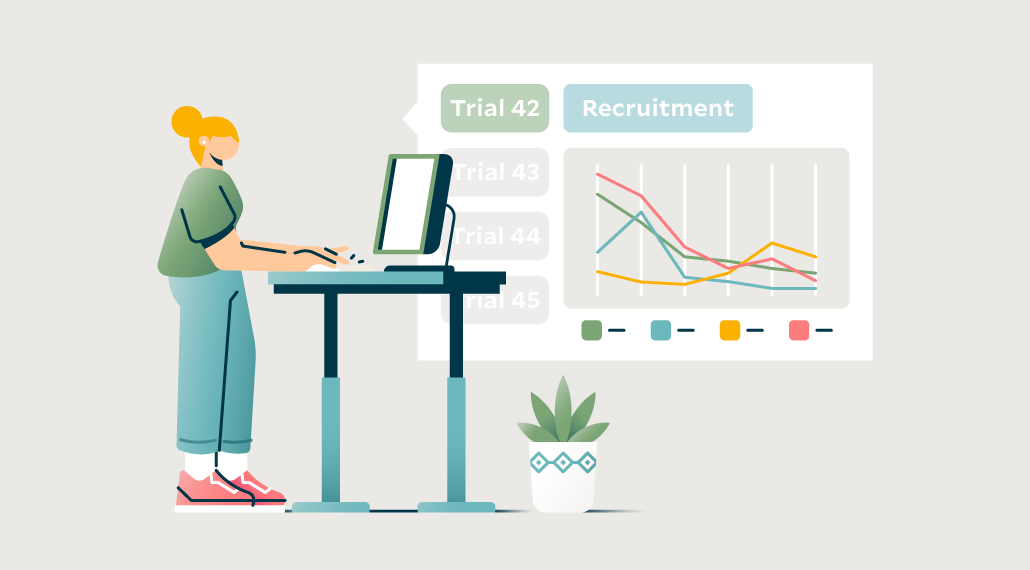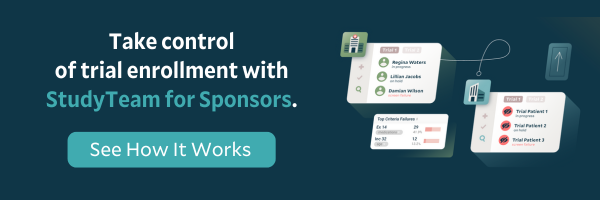October 13th, 2022
For Clinical Research Sites: 2 Digital Features that Boost Collaboration Across Patient Follow Ups
By OneStudyTeam

In the workplace, 86% of employees and executives point to ineffective collaboration and communication as the most common cause of workplace failures. At clinical research sites, ineffective collaboration and communication specifically leads to unmet enrollment goals, patient dropout, delayed protocols, and more.
Collaboration can be challenging for clinical research sites due to inadequate staffing and frequently changing teams—half of sites report high staff turnover rates, between 16% and 30%. This requires multiple people to keep track of each patient’s needs and status over time, and to clearly communicate any changes.
When it comes to managing patient follow ups, digital communication solutions play an important role in better collaboration at clinical research sites. Tools can streamline clinical trial workflows across frequently changing teams. They can also simplify patient task handoffs from one team member to another by keeping communication quick and clear.
In StudyTeam, our enrollment performance management solution, there are a variety of digital tools sites use to collaborate on patient follow ups. Here are two key features.
(1) Connected calendars
About 70% of adults rely on digital calendars to manage their day-to-day schedules. As widely adopted tools across workplaces, digital calendars can be used by clinical research site staff to improve collaboration on patient visit management. Calendars can easily be used to communicate scheduling updates as well as tasks to accomplish during each visit.
“Sites can use our calendar integration feature that allows them to sync their external calendars with our enrollment management platform,” said Ariel Paradis, Product Marketing Manager at OneStudyTeam. “With connected calendars, site staff that use StudyTeam can set their working hours and view other assignees’ availability when scheduling visits. This allows staff to assign tasks and visits to team members without creating scheduling conflicts.”
At the same time, staff who are on-the-go can easily keep track of newly scheduled visits by other team members, so visits aren’t missed and enrollment milestones aren’t delayed.
(2) Digital trial labels
Teams that are equipped to more effectively communicate can boost productivity by up to 25%. Features like digital trial labels quickly communicate updates in the form of concise patient notes, reducing redundant or time-consuming communication among site staff.
In StudyTeam, any staff member with access can add trial labels to patient names on a trial board, quickly communicating next steps or remaining needs that other team members can collaborate on to complete. They can add templated or custom labels like “informed consent needed,” “PI review needed,” and “needs contact.” For users who want to focus on one task at a time, they can filter trial labels to one label, like “ship sample.”
This allows any site staff member to seamlessly move the workflow forward without unnecessary conversations or meetings. They can complete the task and update the patient labels in order to share updates or remaining tasks with their team.
Boost clinical research collaboration with digital solutions that improve clinical trial workflows.
Features like connected calendars and digital trial labels empower site staff to focus on caring for their patients and moving them through the enrollment funnel, even as patients are handed off from one staff member to the next. Subscribing to the same digital communication tools allows sites to better collaborate across patient follow ups, and empowers teams to be more quick and agile overall.
StudyTeam for Sites gives teams the tools they need to streamline communication. Sign up for a free demo.
Related Posts

How Does a Trial Manager in Greece Improve Clinical Trial Operations with StudyTeam®?
Dimitris Tziogas, local trial manager at a biotechnology company in ...
Read More
How to Address Key Clinical Trial Challenges, According to Clinresco Centres in South Africa
There’s no single solution to overcoming a research site’s specific ...
Read More
3 Clinical Trial Billing Challenges Research Sites Solve with StudyTeam
Challenge 1: Complicated coverage analysis Challenge 2: Tedious budgeting ...
Read More

.png?width=64&name=OST%20Transparent%20(1).png)